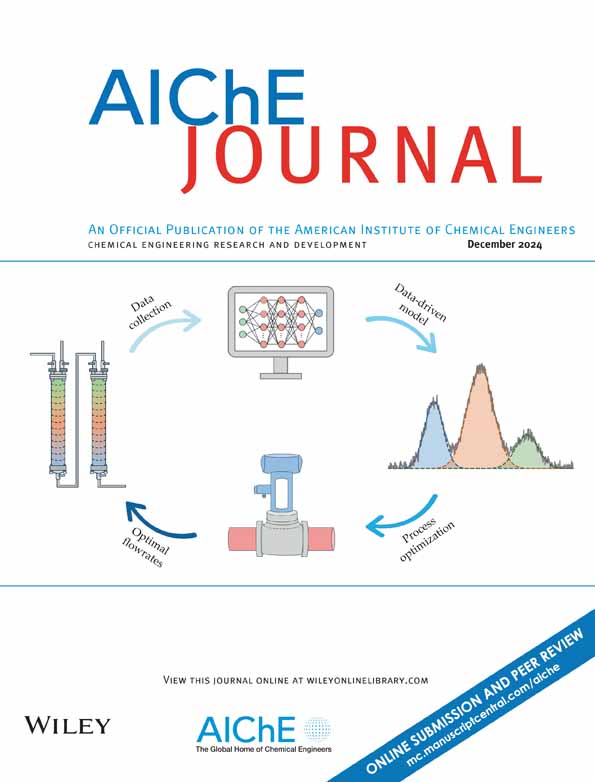Surface structure modulation of biochar enables high‐efficiency photodriven CO2 fixation
IF 4
3区 工程技术
Q2 ENGINEERING, CHEMICAL
引用次数: 0
Abstract
Reforming desirable photocatalytic platforms for efficient carbon dioxide (CO生物炭的表面结构调节实现了高效的光驱动CO2固定
改造理想的光催化平台以有效利用二氧化碳是非常可取的,但也代表着巨大的挑战。在这项研究中,我们报告了一种简单的表面结构调制策略来制备具有不同表面氧官能团的功能生物炭(bc)。次氯酸钠的轻度氧化使BC具有丰富的表面氧,而不会显著影响其固有的形态。在氙灯(400 mW/cm2)和1 bar CO2照射下,BC‐NaClO对CO2和环氧氯丙烷偶联的催化活性达到100%,分别是原始BC、功能BC‐HNO3和BC‐NaOH的3.8倍、2.6倍和1.5倍。进一步的研究揭示了空穴和电子对BC‐NaClO光催化活性的贡献以及光催化和光热催化的协同效应。这项工作证明了高效生物质衍生光催化剂用于目标CO2转化的合理途径。
本文章由计算机程序翻译,如有差异,请以英文原文为准。
求助全文
约1分钟内获得全文
求助全文
来源期刊

AIChE Journal
工程技术-工程:化工
CiteScore
7.10
自引率
10.80%
发文量
411
审稿时长
3.6 months
期刊介绍:
The AIChE Journal is the premier research monthly in chemical engineering and related fields. This peer-reviewed and broad-based journal reports on the most important and latest technological advances in core areas of chemical engineering as well as in other relevant engineering disciplines. To keep abreast with the progressive outlook of the profession, the Journal has been expanding the scope of its editorial contents to include such fast developing areas as biotechnology, electrochemical engineering, and environmental engineering.
The AIChE Journal is indeed the global communications vehicle for the world-renowned researchers to exchange top-notch research findings with one another. Subscribing to the AIChE Journal is like having immediate access to nine topical journals in the field.
Articles are categorized according to the following topical areas:
Biomolecular Engineering, Bioengineering, Biochemicals, Biofuels, and Food
Inorganic Materials: Synthesis and Processing
Particle Technology and Fluidization
Process Systems Engineering
Reaction Engineering, Kinetics and Catalysis
Separations: Materials, Devices and Processes
Soft Materials: Synthesis, Processing and Products
Thermodynamics and Molecular-Scale Phenomena
Transport Phenomena and Fluid Mechanics.
 求助内容:
求助内容: 应助结果提醒方式:
应助结果提醒方式:


